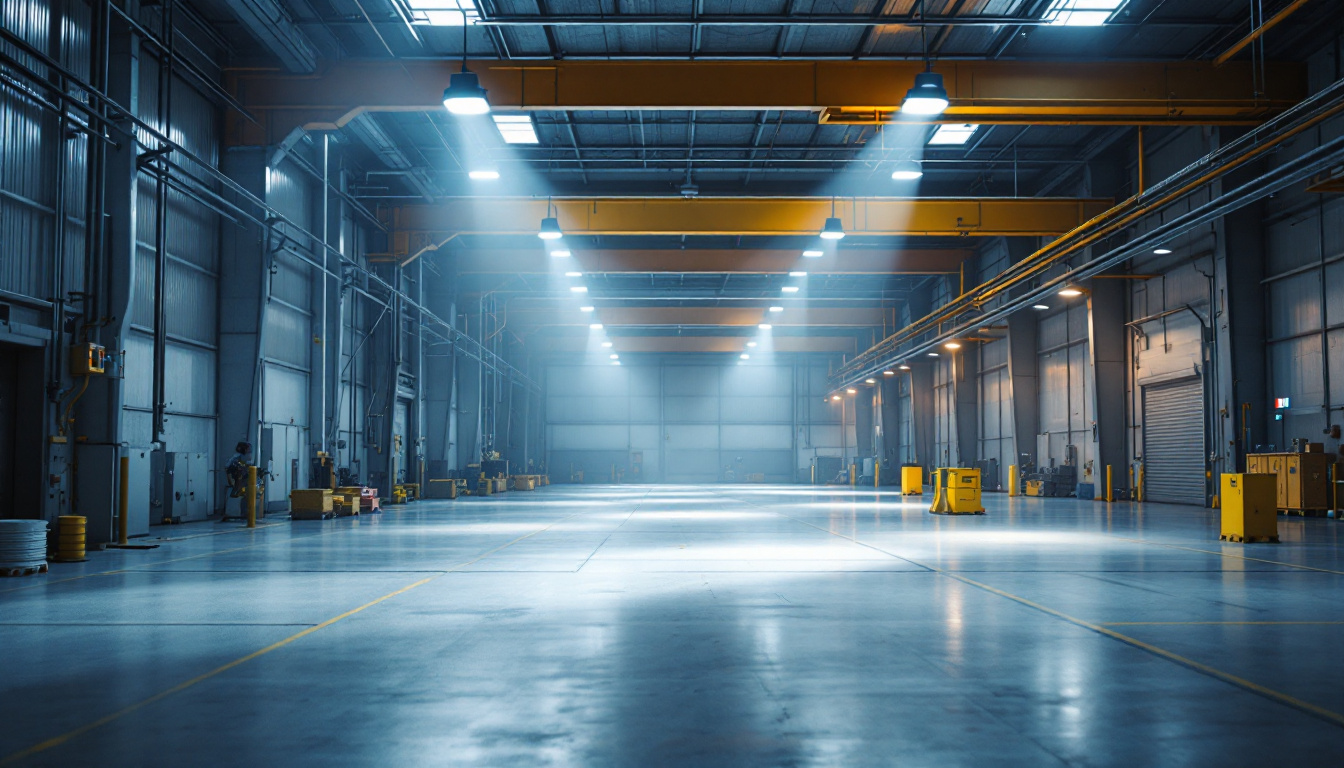
In the ever-evolving world of lighting technology, LED 4-foot lights have emerged as a popular choice for both commercial and residential applications. As a lighting contractor, understanding the intricacies of these fixtures is essential for providing optimal solutions to your clients. This article delves into the key aspects of LED 4-foot lights, including their benefits, installation tips, and considerations for different environments.
LED 4-foot lights, often referred to as LED tube lights, are designed to replace traditional fluorescent tube lights. Their length and design make them suitable for a variety of settings, from warehouses and retail spaces to offices and garages. The shift from fluorescent to LED technology has been driven by the need for energy efficiency, longevity, and improved lighting quality.
One of the most significant advantages of LED 4-foot lights is their energy efficiency. Compared to traditional fluorescent lights, LEDs consume significantly less power while providing the same or even superior brightness. This reduced energy consumption translates into lower electricity bills for clients, making it an attractive selling point for contractors.
Moreover, LEDs have a longer lifespan, often lasting up to 50,000 hours or more. This longevity means fewer replacements and maintenance efforts, which is particularly beneficial in commercial settings where downtime can be costly. The durability of LED lights also means they are less prone to breakage, making them a safer option for high-traffic areas. As businesses increasingly focus on sustainability, the reduced carbon footprint associated with LED lighting further enhances their appeal, aligning with corporate social responsibility goals.
LED technology offers superior color rendering compared to fluorescent lights. With a higher Color Rendering Index (CRI), LED 4-foot lights provide more accurate color representation, which is crucial in environments such as retail spaces where product appearance is vital. Clients will appreciate the enhanced visibility and ambiance that these lights can create.
Additionally, LEDs are available in various color temperatures, allowing contractors to tailor the lighting to suit the specific needs of each space. Whether a warm, inviting glow is desired for a restaurant or a bright, cool light for an office, there is an LED option to meet those requirements. The ability to choose from a spectrum of colors also enables businesses to create specific atmospheres, enhancing customer experiences and potentially influencing purchasing decisions. Furthermore, many modern LED fixtures come with dimming capabilities, providing even greater control over lighting levels and energy consumption, which can be particularly advantageous in multi-purpose spaces that require flexibility.
Installing LED 4-foot lights may seem straightforward, but there are several important factors to consider to ensure a successful installation. Understanding these elements can help contractors avoid common pitfalls and deliver high-quality results.
Before installation, it is crucial to assess whether the existing fixtures are compatible with LED tube lights. Some LED tubes are designed to work with existing fluorescent ballasts, while others require direct wiring. Contractors should be familiar with the different types of LED tubes available, such as ballast-compatible, ballast-bypass, and hybrid options.
Ballast-compatible tubes can be installed directly into existing fixtures without any modifications, making them a convenient choice for retrofitting. However, for optimal performance and energy savings, ballast-bypass tubes are often recommended, as they eliminate the need for ballasts altogether, reducing potential points of failure. It’s also worth noting that hybrid options provide flexibility, allowing users to switch between ballast-compatible and direct-wired modes based on their needs. This adaptability can be particularly beneficial in commercial settings where lighting requirements may change over time.
When installing LED 4-foot lights, proper mounting techniques are essential to ensure safety and functionality. These lights can be surface-mounted or suspended, depending on the design of the space and the preferences of the client. Contractors should ensure that the mounting hardware is suitable for the weight and size of the fixtures.
Additionally, attention should be given to the alignment of the lights. Unevenly mounted fixtures can lead to inconsistent lighting and may detract from the overall aesthetic of the space. Using a level during installation can help achieve a professional finish. Furthermore, considering the spacing between fixtures is critical to achieving uniform light distribution. A well-planned layout not only enhances visibility but also contributes to the ambiance of the environment, whether it be a workspace, retail area, or residential setting. Properly spaced lights can minimize shadows and create a more inviting atmosphere, which is particularly important in areas where people gather or work for extended periods.
LED 4-foot lights are versatile and can be used in various applications. Understanding the specific needs of each environment can help contractors recommend the most suitable lighting solutions.
In commercial settings such as offices, retail stores, and warehouses, LED 4-foot lights are an excellent choice for general illumination. They provide bright, even lighting that enhances visibility and productivity. In retail environments, the ability to choose different color temperatures allows for tailored lighting that highlights products effectively.
Moreover, the energy savings associated with LED technology can significantly impact a business’s bottom line, making them an appealing option for cost-conscious clients. Many businesses are also keen on sustainability, and using energy-efficient lighting aligns with their environmental goals. The longevity of LED lights, often lasting up to 50,000 hours, means that businesses can reduce the frequency of replacements, further minimizing maintenance costs and downtime. Additionally, smart lighting controls can be integrated with LED 4-foot lights, allowing businesses to adjust brightness levels based on occupancy or time of day, enhancing both comfort and efficiency.
While often associated with commercial applications, LED 4-foot lights are increasingly being used in residential settings. They can be installed in garages, basements, and utility rooms, providing ample illumination for tasks and activities. Additionally, their sleek design can complement modern home aesthetics.
Homeowners may also appreciate the reduced maintenance and energy costs associated with LED lighting. As more individuals become aware of the benefits of LED technology, the demand for these fixtures in residential applications is likely to grow. Furthermore, LED 4-foot lights can be utilized in creative ways, such as under-cabinet lighting in kitchens or as accent lighting in living areas, enhancing both functionality and ambiance. The versatility of these lights allows homeowners to customize their spaces, creating inviting environments that reflect personal style while also being practical and energy-efficient.
The lighting industry is constantly evolving, and staying informed about future trends can help contractors remain competitive. Several key trends are shaping the future of LED lighting, particularly in the context of 4-foot lights.
Smart lighting technology is becoming increasingly popular, allowing users to control their lighting through smartphones or voice-activated devices. LED 4-foot lights are no exception, with many manufacturers now offering smart options that can be integrated into home automation systems.
Contractors who are knowledgeable about smart lighting can provide added value to their clients by recommending compatible fixtures and helping with installation. This trend not only enhances convenience but also allows for greater energy management, as users can adjust their lighting based on their needs and preferences.
As sustainability becomes a priority for both consumers and businesses, the demand for eco-friendly lighting solutions continues to rise. LED technology is inherently more sustainable than traditional lighting options, but manufacturers are also focusing on reducing the environmental impact of production and disposal.
Contractors should be aware of these developments and consider recommending products that meet sustainability certifications. This not only aligns with client values but can also enhance the contractor’s reputation as a forward-thinking professional in the industry.
While LED 4-foot lights offer numerous advantages, there are also challenges that contractors may encounter during installation and maintenance. Understanding these challenges and their solutions can help ensure a smoother process.
One of the primary challenges associated with LED lighting is the initial cost. Although the long-term savings on energy and maintenance can be significant, the upfront investment may deter some clients. Contractors can address this concern by providing a clear breakdown of the cost-benefit analysis, highlighting the potential savings over time.
Additionally, offering financing options or rebates available for energy-efficient upgrades can make the transition to LED lighting more appealing to clients. Educating clients on the long-term advantages can help mitigate their concerns about initial costs.
Clients may have specific preferences when it comes to color temperature, and ensuring their satisfaction can be a challenge. Contractors should take the time to discuss these preferences during the planning phase and offer samples or demonstrations of different color temperatures.
By understanding the psychological effects of different lighting colors and how they can impact mood and productivity, contractors can guide clients toward making informed decisions that enhance their spaces.
LED 4-foot lights represent a significant advancement in lighting technology, offering numerous benefits for both commercial and residential applications. For lighting contractors, understanding the intricacies of these fixtures is essential for providing clients with effective and efficient lighting solutions.
From energy efficiency and quality of light to installation considerations and future trends, there is much to explore in the realm of LED lighting. By staying informed and adapting to the evolving landscape, contractors can position themselves as trusted experts in the industry, ultimately leading to greater client satisfaction and business success.
As the demand for LED lighting continues to grow, embracing these innovations will not only benefit contractors but also contribute to a more sustainable and energy-efficient future.
Ready to elevate your lighting solutions with the advanced technology of LED 4-foot lights? At LumenWholesale, we provide lighting contractors like you with the highest quality, spec-grade LED lighting products at unbeatable wholesale prices. Say goodbye to local distributor markups and hello to superior lighting that meets the highest industry standards. With our hassle-free bulk buying and free shipping, you can ensure every project shines brightly without breaking the bank. Don’t compromise on quality or value—choose LumenWholesale for Wholesale Lighting at the Best Value and light up your client’s spaces with confidence and convenience.

Discover the essential guide to high bay fixtures tailored for lighting contractors.

Discover the frequent pitfalls lighting contractors face with sign lighting projects.

Explore the essential insights and trends in commercial lighting industries with our comprehensive guide.

Discover the transformative business advantages for lighting contractors when upgrading from fluorescent bulbs to LED.